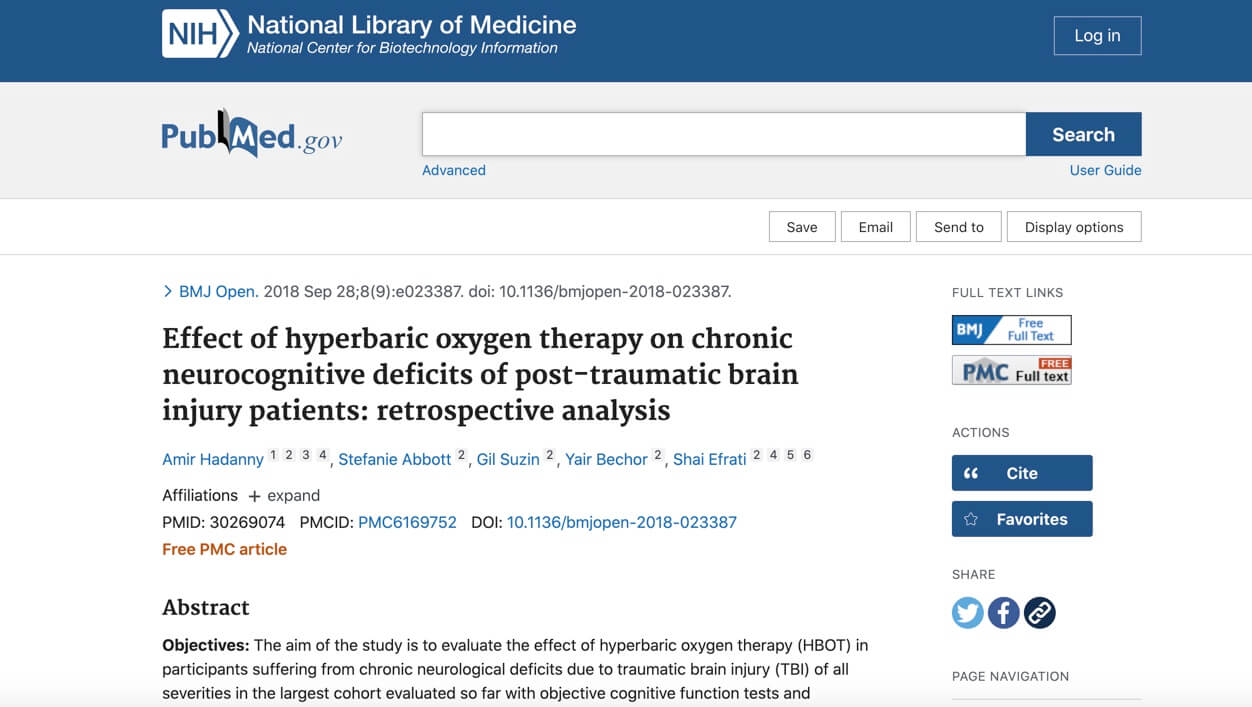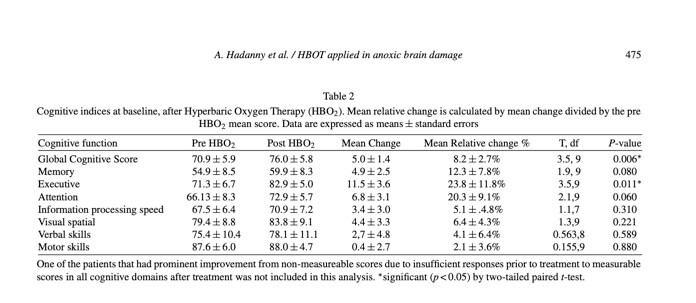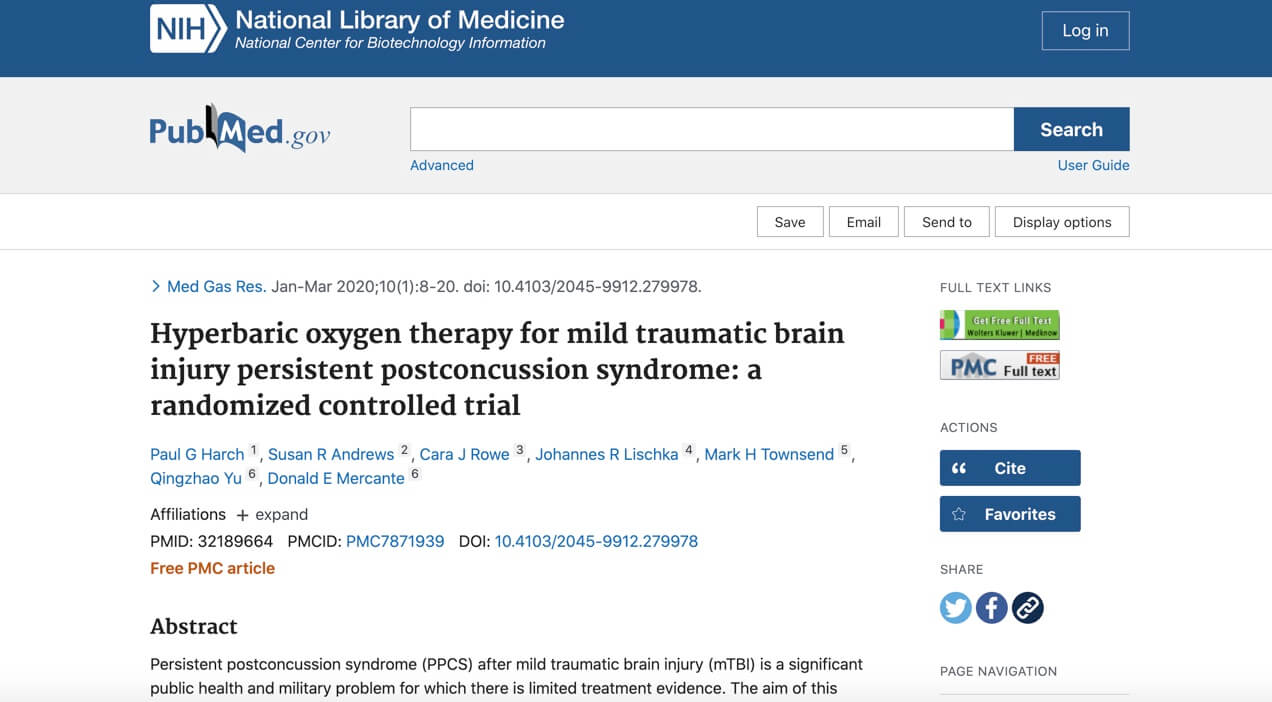Hyperbarics For Concussion & TBI
Efrati Research on HBOT

Conclusions: In the largest published cohort of patients suffering from chronic deficits post-TBI of all severities, HBOT was associated with significant cognitive improvements. The clinical improvements were well correlated with increased activity in the relevant brain areas.
https://pubmed.ncbi.nlm.nih.gov/30269074/
Conclusions: HBOT can induce neuroplasticity leading to repair of chronically impaired brain functions and improved quality of life in mTBI patients with prolonged PCS at late chronic stage.
Trial registration: ClinicalTrials.gov NCT00715052.


HBOT subjects experienced significant improvements in Neurobehavioral Symptom Inventory, Memory Index, Automated Neuropsychological Assessment Metrics, Hamilton Depression Scale, Hamilton Anxiety Scale, Post-Traumatic Stress Disorder Checklist, Pittsburgh Sleep Quality Index, and Quality Of Life after Brain Injury compared to the Control Group.
The Control Group was then crossed over to HBOT. Subjects underwent symptom, neuropsychological, and psychological testing, before and after treatment or control with retesting 2 months after the 40th HBOT. Fifty subjects completed the protocol with primary outcome testing. After crossing over to HBOT the Control Group experienced near-identical significant improvements.
Further improvements were experienced by both groups during the 2-month follow-up period. These data indicate that 40 HBOTs at 150 kPa/60 minutes demonstrated statistically significant improvements in postconcussion and Post-Traumatic Stress Disorder symptoms, memory, cognitive functions, depression, anxiety, sleep, and quality of life.
Psychiatric Times
Treatment of Traumatic Brain Injury With Hyperbaric Oxygen Therapy
May 28, 2019
Psychiatric Times, Psychiatric Times Vol 36, Issue 5, Volume 36, Issue 5
“If a hyper-oxygenated state is maintained for long periods it will cause significant oxidative damage, but when it is “pulsed” for an hour it triggers a variety of healing processes without overwhelming the body’s anti-oxidant system. The currently known mechanisms include a powerful anti-inflammatory effect, reduction of edema, increased blood perfusion, angiogenesis, stimulation of the immune system, stimulation of endogenous antioxidant systems, mobilization of stem cells from bone marrow, axonal regrowth, and modulation of the expression of thousands of genes involved in the inflammatory response and various healing responses.2,3”
Conclusion
HBOT can bring about dramatic improvement in many neurological conditions for which we have had very little to offer other than palliative care. Considering the high incidence of many of these neurological conditions, the safety of treatment, and the simplicity and relatively low cost of mild-HBOT, it is unfortunate that it is not more widely available.
Restorative Neurology and Neuroscience 33 (2015) 471–486 DOI 10.3233/RNN-150517 IOS Press 471
Hyperbaric oxygen can induce neuroplasticity and improve cognitive functions of patients suffering from anoxic brain damage
A. Hadanny (2015). Hyperbaric oxygen can induce neuroplasticity and improve cognitivefunctions of patients suffering from anoxic brain damage. SemanticScholar. https://pdfs.semanticscholar.org/a944/0eecf9a734fe4baf19f753842a7553ab92e2.pdf
HBOT can reverse brain hypoxia, stop and reverse chronic neurocognitive damage and increase brain metabolism and brain function including memory, attention span, and executive function.
BaroMedical Research Centre. (2021) Head Injury and Concussion. https://www.baromedical.ca/medical-head-injury-and-concussion.php
